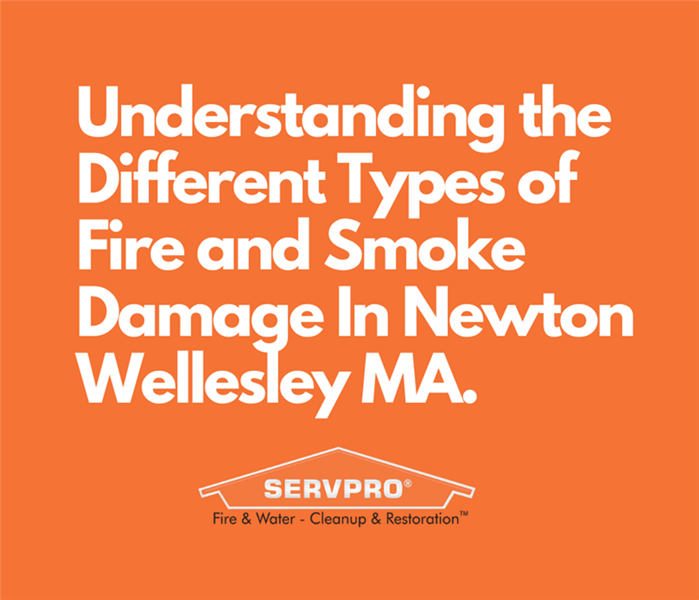Understanding the Different Types of Fire and Smoke Damage In Newton Wellesley MA.
1/6/2024 (Permalink)
 Understanding the nuances of different types of fire and smoke damage is a key step in the restoration process in Newton Wellesley MA.
Understanding the nuances of different types of fire and smoke damage is a key step in the restoration process in Newton Wellesley MA.
Facing a fire is a devastating experience, and its aftermath involves not only the visible destruction caused by flames but also the pervasive impact of smoke.
Fire and smoke damage can manifest in various ways, and comprehending the different types is essential for a successful restoration and recovery process. Here, we will explore the distinct types of fire and smoke damage along with the challenges associated with each.
Structural Damage:
- Description: Structural damage is the most visible consequence of a fire, impacting walls, floors, ceilings, and other building components.
- Causes: Direct exposure to flames, high temperatures, and compromised structural integrity during a fire.
- Challenges: Assessing and repairing structural damage often requires collaboration between structural engineers, contractors, and restoration specialists.
Soot Damage:
- Description: Soot is a fine, black residue composed of carbon particles resulting from incomplete combustion. It can cover surfaces and belongings, leaving behind a distinct odor and staining.
- Causes: Incomplete combustion of organic materials during a fire, releasing fine particles that settle on surfaces.
- Challenges: Cleaning soot demands specialized techniques and equipment to prevent smearing and further damage.
Smoke Damage:
- Description: Smoke damage encompasses the impact of smoke on surfaces, belongings, and indoor air quality, manifesting as discoloration, odors, and corrosive residues.Causes: The complex mixture of gases, chemicals, and particles released during a fire that adhere to surfaces and materials.
- Challenges: Proper ventilation, air purification, and targeted cleaning are essential to comprehensively address smoke damage.
Water Damage:
- Description: Water damage is a secondary consequence of firefighting efforts, resulting from the use of water to extinguish flames. It can lead to issues such as mold growth and structural deterioration.
- Causes: Firefighters' efforts to extinguish the fire using water or other suppressants.
- Challenges: Swift water extraction, drying, and dehumidification are critical to prevent further damage and mitigate the risk of mold growth.
Corrosion Damage:
- Description: Corrosion occurs when acidic byproducts of combustion react with metals, leading to deterioration and discoloration.
- Causes: Interaction between acidic residues in smoke and metal surfaces.
- Challenges: Prompt cleaning and treatment of metal surfaces are necessary to prevent irreversible corrosion damage.
Odor Damage:
- Description: Lingering odors are a common issue after a fire, caused by the combustion of various materials.
- Causes: Absorption of smoke particles into porous surfaces, making odors challenging to eliminate.
- Challenges: Odor removal requires specialized techniques, such as ozone treatment or thermal fogging, to neutralize and eliminate persistent smells.
Dealing with the aftermath of a fire involves addressing various types of damage, each requiring specific expertise and techniques. Restoration professionals play a crucial role in assessing and mitigating these damages, aiding individuals and businesses in rebuilding and recovering from the devastating effects of fire and smoke.
Understanding the nuances of different types of fire and smoke damage is a key step in the restoration process, ensuring a comprehensive and effective approach to recovery in Newton Wellesley MA.






 24/7 Emergency Service
24/7 Emergency Service